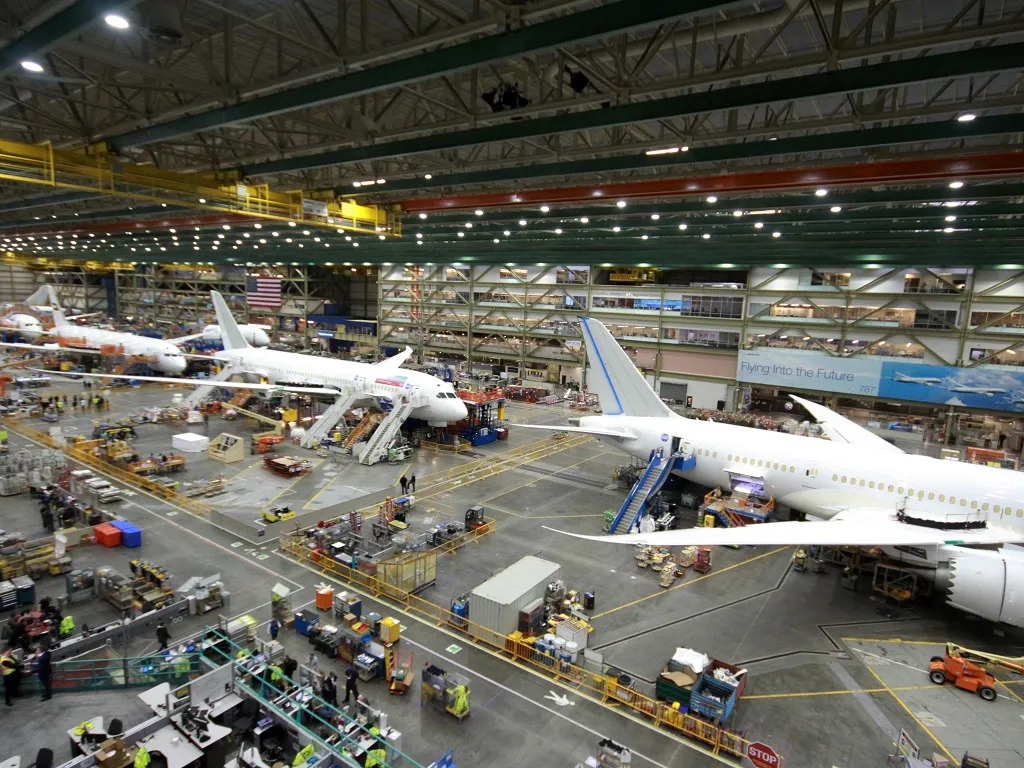
Boeing consolidates 787 production to South Carolina
Oct 01, 2020

Boeing has decided to consolidate its 787 production operations in South Carolina, marking a significant shift in its manufacturing strategy. This move is aimed at streamlining production processes and enhancing efficiency, as the company seeks to address challenges and optimize its supply chain. The South Carolina facility, known for its advanced manufacturing capabilities, will become the sole site for 787 assembly, allowing Boeing to focus resources and expertise in one location. This decision reflects the company's ongoing efforts to adapt to market demands and improve operational performance in the competitive aerospace industry.
The recent announcement by Boeing to consolidate its 787 production to South Carolina marks a significant shift in the aerospace manufacturing landscape. This strategic decision is driven by various factors, including operational efficiency, cost management, and the desire to streamline the production process. As Boeing focuses its efforts on enhancing productivity, it is essential to understand the implications of this move for the company, its workforce, and the broader aerospace industry.
Reasons Behind the Consolidation
Boeing's decision to consolidate 787 production can be attributed to several key factors:
- Operational Efficiency: By centralizing production in South Carolina, Boeing aims to improve operational efficiency. This consolidation allows for better coordination among teams and reduces the complexity associated with managing multiple production sites.
- Cost Management: Consolidating operations can lead to significant cost savings. South Carolina's production facility has been recognized for its lower operational costs, which can positively impact Boeing's overall financial performance.
- Supply Chain Optimization: Centralizing production helps streamline the supply chain, reducing delays and improving the flow of materials. This optimization is crucial in meeting customer demands timely and effectively.
- Focus on Quality: By concentrating 787 production in one location, Boeing can enhance quality control measures, ensuring that every aircraft meets the highest standards before delivery.
Impact on Employment and Workforce
The consolidation of 787 production to South Carolina will undoubtedly have implications for Boeing's workforce. While it may lead to job losses in other locations, it also presents opportunities for employees in South Carolina:
- Job Creation: The South Carolina facility is expected to expand its workforce to accommodate the increased production capacity. This expansion can create new job opportunities for skilled workers in the region.
- Training and Development: Boeing can invest in training programs to upskill its existing workforce, ensuring that employees have the necessary skills to meet the demands of modern aerospace manufacturing.
- Community Impact: The consolidation will positively impact the local economy in South Carolina, as increased employment can lead to higher spending and growth in local businesses.
Charting the Production Shift
To visualize the production shift, the following table outlines the transition of 787 production from various locations to South Carolina:
| Location | Current Production Status | Future Production Plans |
|---|---|---|
| Washington | Active | Phasing out |
| South Carolina | Active | Expanded production |
| California | Inactive | N/A |
Market Response and Implications
The market response to Boeing's consolidation of 787 production has been mixed. Investors and analysts are closely monitoring the situation, as the success of this strategy will significantly impact Boeing's stock performance and market position:
- Investor Confidence: A successful consolidation could boost investor confidence in Boeing, as it demonstrates the company’s commitment to improving efficiency and profitability.
- Competitive Advantage: By streamlining operations and focusing on quality, Boeing can enhance its competitive advantage in the aerospace market, particularly against rivals like Airbus.
- Long-term Growth: The consolidation may position Boeing for long-term growth, enabling the company to respond more effectively to future market demands and challenges.
Environmental Considerations
As Boeing consolidates its 787 production, environmental considerations are becoming increasingly important. The aerospace industry faces growing pressure to reduce its carbon footprint and adopt sustainable practices:
- Eco-Friendly Manufacturing: The South Carolina facility is expected to implement more sustainable manufacturing processes, including energy-efficient technologies and waste reduction initiatives.
- Regulatory Compliance: Boeing will need to ensure that its consolidated operations comply with environmental regulations, which may lead to additional investments in green technologies.
- Corporate Responsibility: By prioritizing sustainability, Boeing can enhance its corporate image and appeal to environmentally conscious consumers and investors.
Conclusion
Boeing's decision to consolidate 787 production to South Carolina represents a pivotal moment for the company and the aerospace industry. While there are challenges to navigate, the potential benefits of improved operational efficiency, cost management, and enhanced quality control are significant. As Boeing moves forward with this strategy, stakeholders will be closely watching its impact on the workforce, market dynamics, and environmental sustainability.
In summary, the consolidation of 787 production to South Carolina is a bold move that reflects Boeing's commitment to adapting to the evolving aerospace landscape and meeting the demands of the future.
Related Articles

Explore Thailand: The Best Islands to Visit for Paradise, Adventure, and Relaxation

The Ultimate Guide to the Best Islands in Thailand for Your Next Getaway

Do babies need passports? How to get a passport for a newborn

How to get a U.S. passport fast: here’s how to expedite the process

What is Mobile Passport Control: 5 reasons why you should use it

SENTRI vs. Global Entry: A detailed guide

Do you need a passport to go to the Bahamas? Let’s find out

Do you need a passport to go to Mexico? A detailed guide

Do you need a passport to go to Canada? We got the answer

Do You Need a Passport for a Cruise: An Essential Travel Guide

Booster Seat Requirements: All the Rules to Follow in Your Rental Car

What Are the World’s Most Powerful Passports, and How Does Yours Rank?

How to Take a Passport Photo at Home: A Helpful Guide

You've got to have heart! Southwest's new livery

Your opinion: Should water be free on low cost carriers?

Young women bolder than guys as solo travellers
